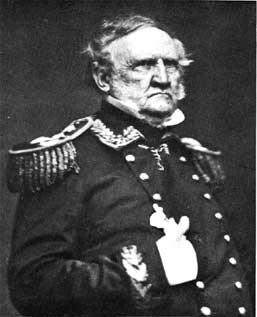1837- Aroostook War

General Scott
This war was marked by a series of bloodless skirmishes on the border between Maine and Canada. This border had never been clearly defined and thus was disputed by both sides. President Van Buren sent General Winfield Scott to negotiate a deal. Scott was able to arrange a truce.
The Treaty of Paris ended the Revolutionary War and set the border between Maine and Canada. However, that border was not set with any degree of accuracy. During the War of 1812, the British occupied parts of Maine. The treaty that ended the war in 1812, the Treaty of Ghent, also failed to delineate the border carefully. As a result, tension remained regarding where the border was located and who had legal control over various areas—by 1839, tensions had boiled over into a near war with both the State of Maine and the Province of New Brunswick arresting each other's citizens. The crisis seemed ready to turn into an armed conflict. Congress authorized raising an army of 50,000 men and allocated $10 million to the project. President Van Buren had no interest in being dragged into a war with Great Britain over forested areas of Maine. To show military resolve, Van Buren sent General Winfield Scott to the northern border area. More importantly, Scott was sent to lower the tensions. Scott successfully convinced all sides to submit the border issue to arbitration. The dispute was put to rest a few years later with the signing of the Webster-Ashburn Treaty.
 >
>